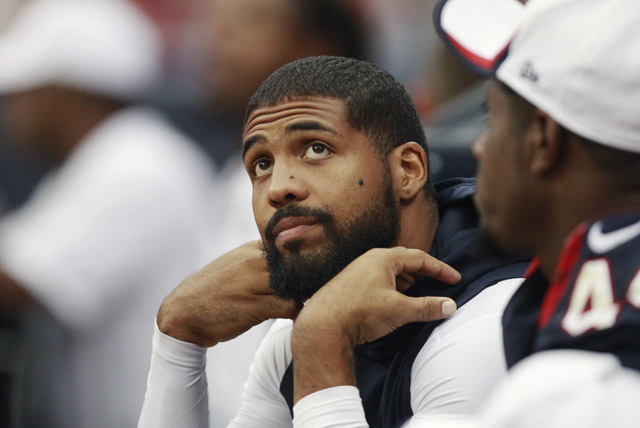Paying student-athletes gaining momentum

I’m not sure it can be stopped.
Think of runaway train #777 and Denzel Washington trying to prevent it from crashing into a town and doing irreversible damage.
It seems to own that sort of momentum, for better or worse when talking the future of college athletics.
Reform is coming. Know that.
But how much of it will relate to student-athletes being compensated for their talents is unknown, and yet the call for such action directly has reached the fields of play and those performing on them.
It’s never going to be the same and maybe shouldn’t be.
The stories won’t cease. The charges won’t dwindle. One day, it’s a five-part series in Sports Illustrated that includes tales of Oklahoma State football players claiming to have been paid for good performances.
The next, former Tennessee running back and now NFL standout Arian Foster says he was paid “on the side” when playing for the Volunteers.
Maybe it’s delayed bitterness. Maybe old wounds don’t heal. Maybe those speaking out now about things that occurred years ago at universities they attended on full scholarships believe they are helping to better the system.
Whatever the reasons, the push for athletes to be financially rewarded for their talents is more powerful than ever, and the day of it happening might be closer than the next Johnny Manziel autograph session.
“One thing that sets the fundamental tone is there’s very few members and virtually no university president that thinks it’s a good idea to convert student-athletes into paid employees — literally into professionals,” NCAA president Mark Emmert said during a speech this week. “Then you have something very different from collegiate athletics. One of the guiding principles (of the NCAA) has been that this is about students who play sports.”
It’s a fading principle.
The driving force: athletes.
For the first time in forever on this debate — should those college players we cheer so loudly be paid or not— the greatest amount of leverage seems to reside with those scoring touchdowns and baskets.
You might have heard of the All Players United campaign, which had front-and-center placement at selected football games last weekend as a handful of players inscribed the acronym APU on their uniforms or equipment. It was a small sample, fewer than 30 players across the country, but made enough national news to warrant serious attention.
Slowly, surely, student-athletes are uniting with the common goal of fighting against rules they believe infringe on their rights, as much about the health of their bodies as the size of their wallets.
It’s not a movement to take lightly.
“They have us feeling like that’s wrong (to get paid),” Foster told reporters in Houston this week. “It’s not wrong. That’s how I keep my lights on now, and there’s nothing wrong with it. But they have us feeling like it’s OK to sanction 18-year-old kids because they received money for playing a sport. And they try to disguise it under the rule of amateurism … it has been a big charade for years, and it’s about time for it to come to an end.”
It’s not that easy. At least it hasn’t been.
For so long, the idea of paying the best players in football and men’s basketball, those sports that generate the most revenue for schools, was countered with the argument that once you begin writing such checks, gender-equity proponents would bring a torrent of legal action sure to frighten the daylights out of any institution not willing to also compensate its soccer and tennis and softball players and so on.
But who is to say the NCAA as we know it even will exist a year from now?
The divide between the haves and have-nots of major college football grows wider by each 50-point blowout, and there is every chance those from the six power conferences eventually will split and form a Super League of teams that will devour even more of the financial pie than they already consume.
Which is pretty much the whole darn thing.
Already, those schools with the biggest budgets have supported a plan of allowing for athletic stipends to help pay an athlete’s expenses not covered by a scholarship. Smaller schools are against it. Haves. Have-nots.
But the big boys are sure to win the battle on an overhaul of NCAA reform. Whether that means student-athletes finally will share in the millions and millions of dollars generated by some of the sports they play is to be determined, but never in the history of college athletics has such a notion been this close to becoming reality.
I’m sure Mark Emmert would disagree.
I’m also certain he and other college presidents don’t grasp how much power a movement such as APU ultimately might wield.
Las Vegas Review-Journal sports columnist Ed Graney can be reached at egraney@reviewjournal.com or 702-383-4618. He can be heard from 11 a.m. to 2 p.m. Monday through Friday on “Gridlock,” ESPN 1100 and 98.9 FM. Follow him on Twitter: @edgraney.












